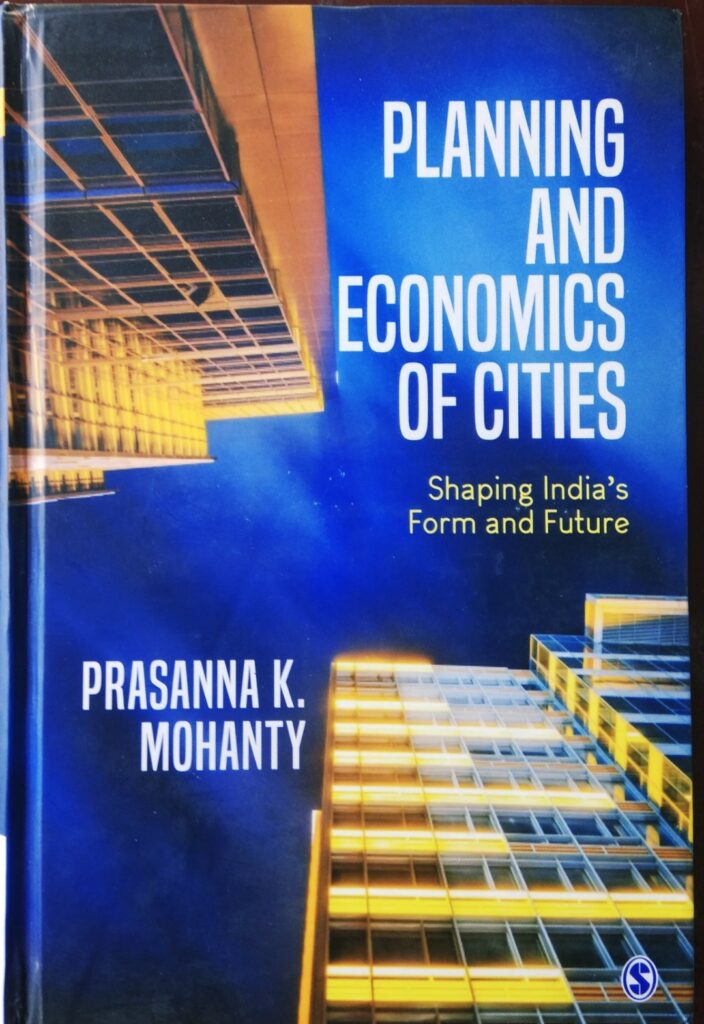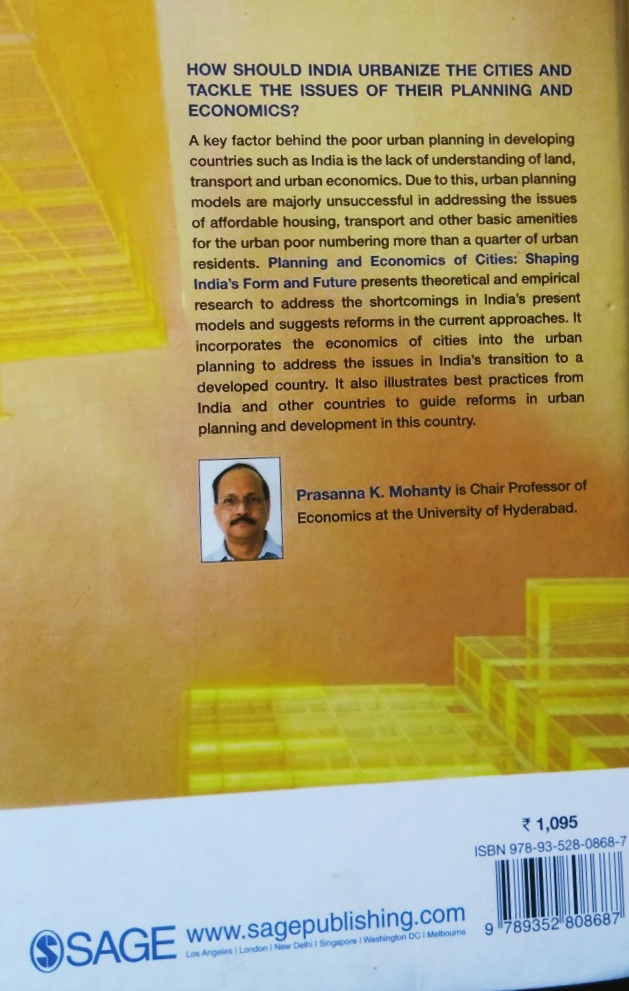Bhaskar Parichha

Urban planning is a critical instrument to manage cities, but it is too often a neglected subject, particularly, in India. Indian planners have systematically and consciously tried to push urban and town planning to the sidelines resulting in chaos and confusion. It is only in recent years that urban planning has become a center of attention for policy planners.
The government of India carved out National Urban Policy Framework (NUPF). The policy outlines ten truth-seeking principles focusing on an even number of functional areas of urban space and management. However, under provisions of 7th Schedule of the Constitution, Urban Development and Urban Policy is a State subject. This is where the problem lies.
‘A key factor behind the poor urban planning in developing countries such as India is the lack of understanding of the land, transport, and urban economics. Due to this, urban planning models are majorly unsuccessful in addressing the issues of affordable housing, transport and other basic amenities for the urban poor numbering more than a quarter of urban residents’, says this seminal book ‘Planning and Economics of Cities: Shaping India’s Form and Future.’
Prasanna K. Mohanty is Chair Professor of Economics at the University of Hyderabad who teaches Urban and Transport Economics. Dr. Mohanty is Honorary Executive Chair of National Institute of Urban Management, Adviser to Centre for Good Governance, Hyderabad and a Director in the Board of Reserve Bank of India. An officer from the Indian Administrative Service, Dr. Mohanty was Chief Secretary to the Government of Andhra Pradesh. He worked as the Mission Director, Jawaharlal Nehru National Urban Renewal Mission, Government of India; Director-General, Centre for Good Governance, Hyderabad; Commissioner of metropolitan cities of Hyderabad and Visakhapatnam; and Vice-Chairman of Hyderabad Urban Development Authority. All these august positions make him eminently suitable to write a book on the subject that is dear to his heart.
Writes Dr. Mohanty in the preface, ‘India needs to invest in planning and development cities to speed up structural, spatial and socio-economic transformation processes. And he goes to point out that, ‘dense, diverse and networked cities, distinguished by their land-use intensities, transportation, and communication girds and economic growth drives will shape India’s form and future’. For this to happen, the country needs to synergize land, transportation, and spatial planning.
Planned urban development at any setting envisages a zoning classification for an area of land that can contain a mixture of residential buildings (homes), non-residential buildings (shops or industrial buildings), and open land (parks). These areas are often very attractive because of the many opportunities they provide for both residents and commercial entities. This we are witnessing today in the various metros.
The book in about 370 pages presents a very strong theoretical and empirical study to address the shortcomings in India’s present urban models and jumps to suggest reforms in the current approaches. It talks about the economics of cities and their incorporation to urban planning to address the issues in India’s transition to a developed country. What is significant is, the hard-back gives best practices from India and other countries to guide reforms in urban planning and development in India. Each of the illustrations from across countries is a revelation to urban planners in India.

Neatly divided into nine chapters and supported by extensive data and mathematical models to corroborate his thesis, Dr. Mohanty gives an overview of the subject in the maiden chapter. Then he deals with agglomeration, networking, and cities, spatial transformation, integrating land, transportation and urban economics, master planning et cetera. Three chapters in the book need to be talked about – alternatives to the public acquisition of land, inclusionary zoning and housing and financing urban development. Each of these three issues has been contentious in India but Dr. Mohanty has an answer to them. Citing successful stories of urban development across Indian states, he goes to say that, ‘Indian cities have not harnessed urban planning as a resource. They are under-planned and over-regulated. They are also under-funded and under-managed.’
Cities in India have become the agglomerations of national and regional prosperity. They have been the epicenters of opportunities. However, in the era of globalization and rapid urbanization, it is a challenge to make cities centers of growth and development that include the poorest populations.
In the past, urbanization and its concomitant challenges commanded low priority in national political discourse. Recently, however, the economic and demographic rise of cities in many parts of the country, especially Southern and Western India, and the National Capital Region, are drawing greater attention. This is likely to rise further in the coming years as urbanization mounts.
A rapidly growing urban population and significant migration from small towns and villages towards the cities have contributed to the deterioration of the built and non-built environment and the decline in the quality of life in urban spaces. These factors, in addition to the wide gap between the livability conditions and aspirations of different stakeholder groups within a city, exert tremendous pressure on the socioeconomic, physical, institutional and cultural infrastructure of the cities. To address these issues, the GoI initiated a flagship program in 2015—the Smart Cities Mission (SCM)—for the smarter development of cities.
Even though the Smart Cities Mission has reconceptualized and extended the Smart City model in ways that make it relevant and useful for most of India’s major cities, Dr. Mohanty’s book has a macro outlook and goes beyond the immediate. One would find the book quite in sync with the ten ‘sutras’ of NUPF.A must-read for urban planners.
Planning & Economics of Cities
Dr Prasanna K Mohanty
SAGE Publications India
B-1/I-1, Mohan Cooperative Industrial Area
Mathura Road,NEW Delhi 110044
Rs 1095
2019



























